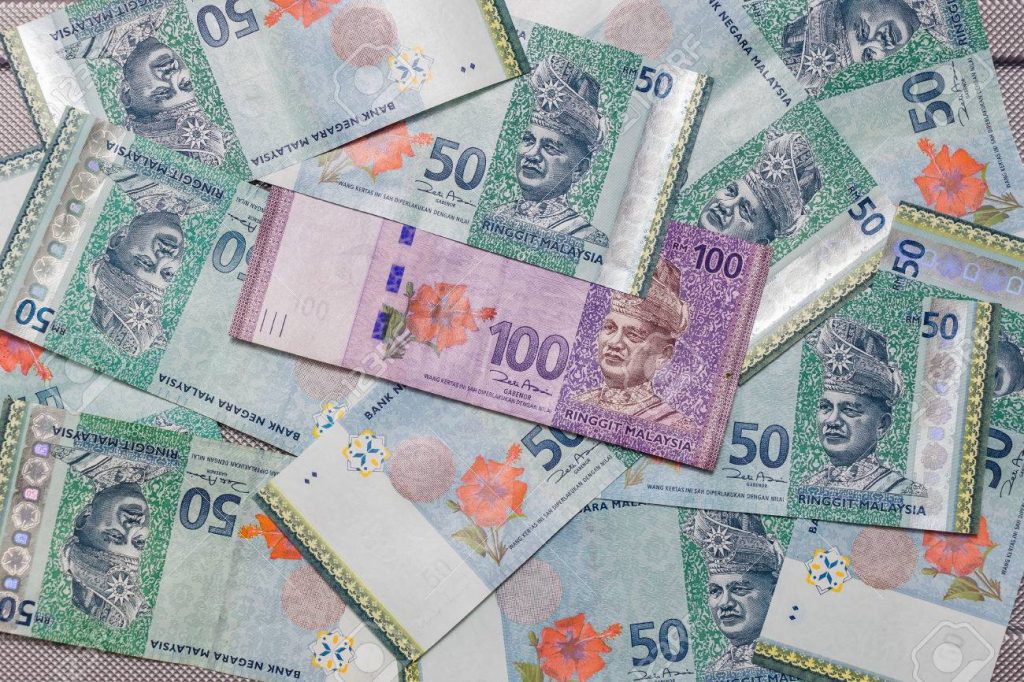Malaysia’s Traditional and Complementary Medicine goes mainstream
Posted on
What are Traditional Medicine, Complementary Medicine and Alternative Medicine?
Traditional Medicine (TM) has different definitions to different people. However the World Health Organisation defines TM as “the sum total of knowledge, skills and practices based on the theories, beliefs and experiences indigenous to different cultures that are used to maintain health, as well as to prevent, diagnose, improve or treat physical and mental illnesses”
TM is therefore a comprehensive term that refers to a diverse form of health practices, approaches, knowledge and beliefs incorporating plant, animal, and/or mineral based medicines, spiritual therapies, manual techniques and exercises applied singularly or in combination to maintain well-being, as well as to treat, diagnose or prevent illness that has long established in a country. Some of the best-known TM systems include Traditional Indian Medicine (Ayurveda), Traditional Chinese Medicine (TCM), and Traditional Arabic Medicine (Unani). Traditional Malay Medicine (TMM) also falls under this category.
It is an accepted fact that countries in Africa, Asia and Latin America use TM to help meet some of their primary health care needs. In Africa, up to 80% of the population uses TM for primary health care.
Health care practices that are not part of the country’s conventional health care system or modern medicine are often referred to as Complementary and Alternative Medicine or CAM. Strictly speaking however Complementary Medicine (CM) is different from Alternative Medicine (AM) though sometimes, the terms CM or AM are used interchangeably with TM. CM is by definition non-conventional medicine practice used together with conventional medicine practice while AM is used in place of conventional medicine practice.
Complementary and Alternative Medicines (CAM) come in a wide variety of forms. The 5 main categories include the following:
Alternative medical systems
Homeopathy and Naturopathy are among the healing practices that evolved from AM. Others may include The Traditional Malay Medicine (TMM), The Indian Traditional Medicine (Ayurveda) and The Traditional Chinese Medicine (TCM). Within TCM are Acupuncture and Acupressure.
Acupunctureis a TCM technique that uses thin, sterile needles to stimulate specific points around the body. The goal is to help the body’s natural healing process kicks in. Acupuncture is believed to encourage the release of endorphins, natural painkillers that can also increase feelings of well-being. Studies have shown that acupuncture can be effective in treating a number of conditions, like neck and back pain, nausea, anxiety, depression, insomnia as well as infertility. Somewhat similar to Acupuncture, Acupressure is a therapy in which the same acupoints are stimulated by hand. The therapy may be effective in the same way, but to a lesser degree than Acupuncture.
Mind-body medicine therapy
Hypnosis is a popular type of mind-body therapy. Others may include Meditation, Yoga and Music Therapy.
Yoga is often practiced as a form of exercise and a means of reducing stress. However Yoga is also used in CAM. Indeed, some research indicates that Yoga may help manage conditions like anxiety, insomnia, migraines, and depression.
Biologically-based therapies
Biologically-based therapies in CAM use substances found in nature, such as herbs and vitamins. Others in this category may include Aromatherapy, and Nutritional Therapy.
Herbal Medicine, also called Botanical Medicine or Phytomedicine, refers to using a plant’s seeds, berries, roots, leaves, bark or flowers for medicinal purposes. It is used to treat allergies, asthma, eczema, premenstrual syndrome, rheumatoid arthritis, fibromyalgia, migraine, menopausal symptoms, chronic fatigue and irritable bowel syndrome. In The United State this category of CAM is the most popular and most widely used.
Manipulative and body-based methods
Manipulative and body-based methods in CAM are based on manipulation and/or movement of one or more parts of the body. Some examples include chiropractic or osteopathic manipulation, massage and cupping.
Cupping is performed by applying cups made of glass or similar tools to selected skin points and creating a vacuum, either by heat or by suction. There are two methods of cupping – dry or wet. Dry cupping does not draw blood while wet cupping removes blood stasis, which is an accumulation of toxins in the body. Most commonly, cups are made out of glass. However, before the use of glass, cups made of bamboo, clay, or animal horns were used. Some uses of cupping are for the treatment of lower back pain, neck and shoulder pain, headache and migraine. Cupping is also reported to help stimulates blood circulation, aids in detoxification, and promotes healing
Energy therapies
Energy therapies involve the use of energy fields. Examples include Qi Gong, Reiki, Therapeutic Touch, Aura Metaphysic and Color Vibration Therapy.
Reiki is an energy medicine practice that originated in Japan. In Reiki, the practitioner places his hands on or near the person receiving treatment, with the intent to transmit ki, believed to be life-force energy.
Adoption of Traditional and Complementary Medicine (T&CM) – The Malaysian Perspective
In Malaysia the use of Traditional and Complementary Medicine (T&CM) is widespread and increasing. Malaysia’s rich tropical biodiversity is a reliable source for natural health products and the government is now aware of its full potential. The high demand for T&CM has led to tireless efforts by the Malaysian government to integrate it into the national healthcare system. Hence, efforts were and are ongoing to take TM and CM mainstream with the view of TM and CM complementing and not to replace the role of conventional medicine practices. Towards this end TM and CM are grouped together under the umbrella of Traditional and Complementary Medicine (T&CM). These health systems and practices used to be outside the conventional modern medical system.
Several initiatives and measures were taken to ensure safety and quality of T&CM practices in the country. These include the establishment of the Traditional and Complementary Medicine Division (T&CMD) by the Health Ministry in 2004 and the gazettement of Traditional and Complementary Medicine (T&CM) Act (Act 775) on 10 Mac 2016 and enforced on 1 August 2016. Under the act the recognised T&CM practices have been categorised into six main groups based on the main ethnic groups and concept of practice. The six practices are Traditional Malay Medicine (TMM), Traditional Chinese Medicine (TCM), Traditional Indian Medicine (TIM), Homeopathy Medicine and Islamic Medicine
Status and progress of T&CM in Malaysia.
The mainstream healthcare system in Malaysia is the modern or conventional medicine. However the Health Ministry Malaysia advocates T&CM as a complement to modern medicine and strives to not only make safe and quality T&CM services accessible to the public, but by integrating them into the national health care system with the aim of achieving holistic health care for all Malaysians.
The Traditional and Complementary Medicine (T&CM) Act 2016 (Act 775) which governs T&CM practices and practitioners in Malaysia, was gazetted on 10 March 2016 and enforced on 1 August 2016. Malaysia is one of the very few countries to regulate diverse practices and practitioners of T&CM. The enforcement of the Act will be conducted in phases.
As of July 2017, 15 hospitals have successfully combined T&CM practices within the national healthcare system. Currently, there are seven (7) modalities of T&CM practices offered in T&CM units of government hospitals, namely:
- Traditional Massage for chronic pain and stroke
- Acupuncture for chronic pain and stroke
- Herbal Therapy as an Adjunct Treatment for Cancer
- Traditional Postnatal Care
- Shirodhara
- External Basti Therapy
- Varmam Therapy
While the following are the government hospitals where some T&CM services are available (The five main services currently offered are Malay Massage, Malay Postnatal Care, Acupuncture, Chinese Herbal Therapy, and Shirodhara):
- Hospital Kepala Batas, Pulau Pinang
- Hospital Sultanah Bahiyah, AlorSetar
- Hospital Putrajaya, Putrajaya
- Hospital Rehabilitasi Cheras, Kuala Lumpur
- National Cancer Institute, Putrajaya
- Hospital Port Dickson
- Hospital Sultan Ismail, Johor Bharu
- Hospital Sultanah Hajjah Kalsom, Cameron Highlands
- Hospital Sultanah Nur Zahirah, Kuala Terengganu
- Hospital Perempuan Raja Zainab II, Kota Bharu
- Hospital Jasin, Melaka
- Hospital Umum Sarawak, Sarawak
- Hospital Duchess of Kent, Sabah
- Hospital Sungai Buloh
- Sabah Women and Children Hospital
Notes: The Malaysian model of integrating conventional health practices and CAM may signal the move towards Integrative Health Care. Integrative Health Care is defined as a comprehensive, often interdisciplinary approach to treatment, prevention and health promotion that brings together complementary and conventional therapies.
Why Traditional and Complementary Medicine?
The National Health and Morbidity Survey conducted by the Ministry of Health Malaysia in 2015 on Traditional and Complementary Medicine had revealed some interesting findings. Among the reasons given for the use of T&CM practices was mainly to maintain wellness while the use as treatment was still low. For those who seek T&CM practices as a treatment, the percentage of use as primary treatment or complementary treatment were almost equivalent. The number of people who used T&CM as an alternative treatment without seeking treatment in conventional medicine is less than 20%.
Also, Malaysian population are most likely to use T&CM for health problems related to musculoskeletal system problems such as myalgia, join pain muscle ache and back pain. This is similar to the reported reason for T&CM use worldwide especially in USA.
About the guest contributor
Mr Ahamad Rozi Daud is a keen practitioner of traditional medicines in Kuala Terengganu, Malaysia. He is a stingless bee honey producer. This honey is considered to have special health properties.















